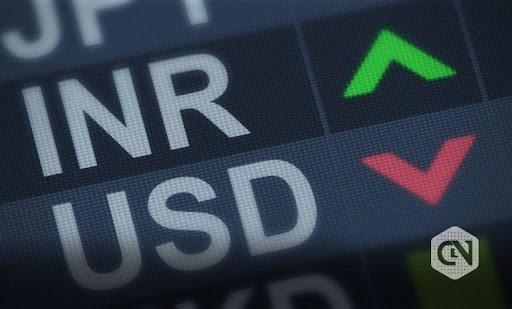The Indian Rupee (₹) and the US Dollar ($) have been trading in a familiar territory for almost a month. The range is ₹81-₹84. The INR is currently at ₹83.30 for every US Dollar. However, the currency has been reported to have made some modest gains against the US counterpart in early trade.
A quick movement into the market is likely to fetch favorable results. That being said, the slide can go either way, especially how forex brokers in India are expected to respond to future changes or factors for economic impact – national plus international.
Rupee’s performance
When drafting this article, the Year-to-Date performance of ₹ is up by 0.67%. Values are subject to changes due to internal and external factors. The last month has seen the residing currency lose value, with the last 30 days declining by ~0.13%. This is specifically against the US Dollar.
Indian Rupee’s performance against other major currencies has been somewhat decent for the forex trading market. For instance, the GBP/INR pair is at ₹105.29, while the EUR/INR pair is at ₹91.31. The JPY/INR pair has a tally on the board of ₹56.24. All the values are about the RBI – Reserve Bank of India – and are true at the moment.
Factors influencing the gain
The USD/INR pair gains are due to external and internal factors. From a broader perspective, foreign exchange trading is indeed affected by every little market movement. The INR is already one of the most sensitive currencies in the world, making it more vulnerable to even an inch of a factor. Some of them that affect ₹ the most are:
- Oil Prices: India has been able to balance its oil purchases during the Russia-Ukraine conflict. As major unions imposed sanctions on oil purchases, India secured units at a good price. Now that there is a rebound in crude oil prices, INR may have to take a back seat till it comes up with a diplomatic alternative.
- Equity Inflows: A currency that largely benefits from equity inflows is Indian Rupee. MSCI has also decided to up the weight of India in its Emerging Market Index with effect from the last day of November. Equity inflows are estimated to touch $1.5 billion in this week alone.
- State Elections – A total of Indian states are awaiting the results of elections. A change in the government will signal a change in local policies. Thereby affecting the national policies at the macro level. Opposition parties prevailing in state elections will get the motor running for the Central Government which could be tasked to align the interests before making an international move.
Other factors that affect the performance of ₹ are international trade and investments. Any country that trades actively sees a more balanced value of the currency. Investments showcase regular inflows for better control.
Impact on trade and economy
The two sectors that are affected the most are IT and Export. While the currency should appreciate, IT and Export segments disagree, for it minimizes their revenue stream. India hosts most IT services for foreign clients – software to support – and a gain in the forex trading market brings a gloomy picture for them.
- Domestic exporters are hit the most, with their profits reducing in the books. Foreign clients are unaffected since the price remains unchanged; domestic exporters lose the actual gain.
- IT and other industries like pharmaceuticals and jewelry go through the same graphical performance.
INR gains against USD seem beneficial to a select segment as it goes on to hit others badly in their books.
Global economic context
A better performance of INR across the globe paves the way for more integrations. It demonstrates the strength of the currency and potential of the country when it comes to the exchange of services and products. A larger financial integration will bring India in tune with the world.
The goal of the current Central Government is to increase trade in INR. The move is gaining momentum, and many countries have agreed to use ₹ for international trade directly. Hence removing the US Dollar from the picture completely. The foreign exchange market has yet to reflect on its development, as integration with select countries will yield results only after a couple of months.
Conclusion
Tesla may potentially enter India. Apple has started manufacturing its iPhone in the country. Simply put, India and the US are getting closer to trades, with many prospects lined up to happen in the future. The $/₹ pair is likely to improve more subject to factors including, but not limited to, oil prices, equity inflow, and state elections.
Credit: Source link
































